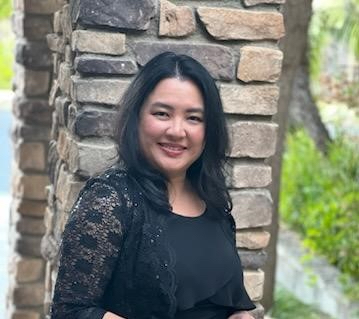Unveiling the Bene Gesserit’s Secrets With “Dune: Part Two” Costume Designer Jacqueline West
After just nine days in release, Denis Villeneuve’s much-anticipated sequel to his first Dune film has already scored $367 million in worldwide box office. The massive response to Dune: Part Two is due in no small part to costume designer Jacqueline West’s intricate designs that went beyond adding depth to the characters—they are integral in building a complex, harsh world thousands of years into the future.
After designing 2,000-plus costumes—including the bespoke stillsuits—for the first film, the five-time Oscar nominee (who was most recently nominated for Killers of the Flower Moon) is back to bring Frank Herbert’s futuristic Known Universe to life. Whereas part of the first film took place on the lush ocean planet of Caladan— the ancestral home of House Atreides—the sequel is largely set on the desert planet Arrakis, with more focus on the Harkonnens’ mostly barren planet, blackly lit planet Giedi Prime.
When the first installment ended, House Atreides was almost wiped out by the Harkonnens in a sneak attack on Arrakis, leaving Paul Atreides (Timothée Chalamet) and his mother, Lady Jessica (Rebecca Ferguson) on the run. The sequel picks up once they have found refuge at Sietch Tabr, a major Fremen community hiding from the harsh sun Canopus in cavernous caves and tunnels within mountains or rock outcrops.
In Dune: Part One, you had costume designer Bob Morgan co-running the workshops in Budapest, London, etc. How did production evolve in Part Two?
Though it was sad not having Bob, all of my crew from Dune One came back. I just love the show of loyalty—both to the project and to me—and the continuity. I had a new assistant costume designer, the brilliant Daniel Cruden, and still had [costume cutter] Helen Beasley, Rachel Freire cutting for me, and the brilliant [supervising textile artist] Matt Reitsma from London, who printed all those incredible Fremen fabrics. He came up with designs based on the Fremen alphabet for everybody in the Sietch. I had incredible manufacturing capability in this movie, which was much more expansive.
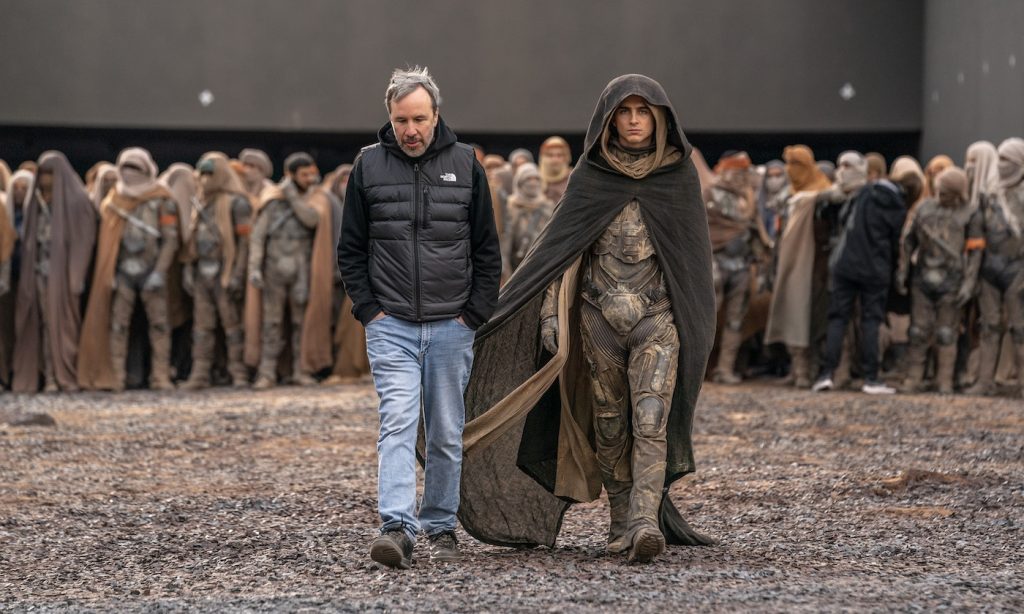
In the first film, about 2,000 costumes were made. How many were made for Part Two?
About 4,000 pieces. Gerge [head propmaker Gergely Dömölki] still made all the wormriding armor and a lot of the Harkonnen armor in his armory in Budapest, on an island on the Danube. We had to set up a workshop to replace all the stillsuits that got trashed in the battle scenes in Dune: Part One. It was a huge manufacturing endeavor. I was so happy with my workroom and the level of artistry and commitment. We had a whole soundstage set up for our manufacturing.
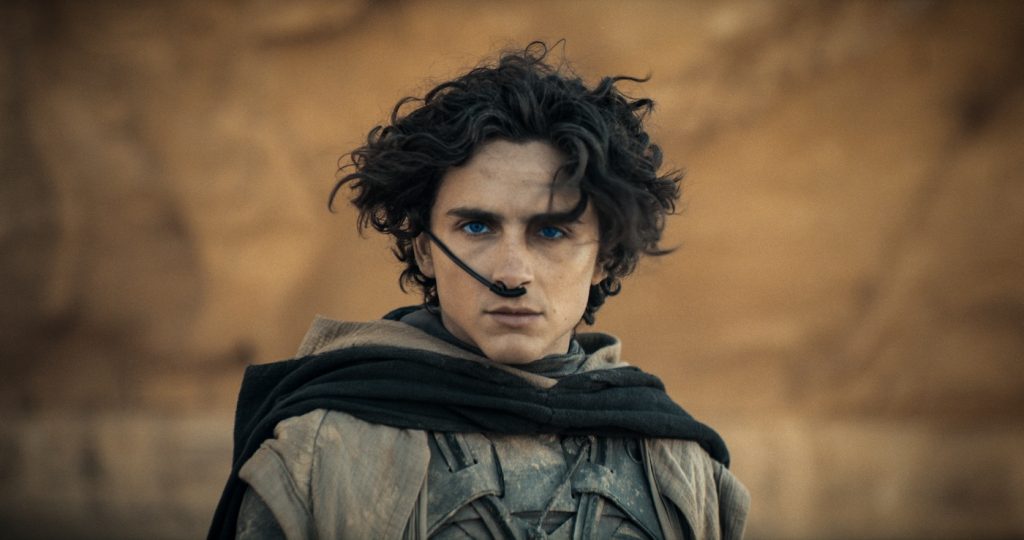
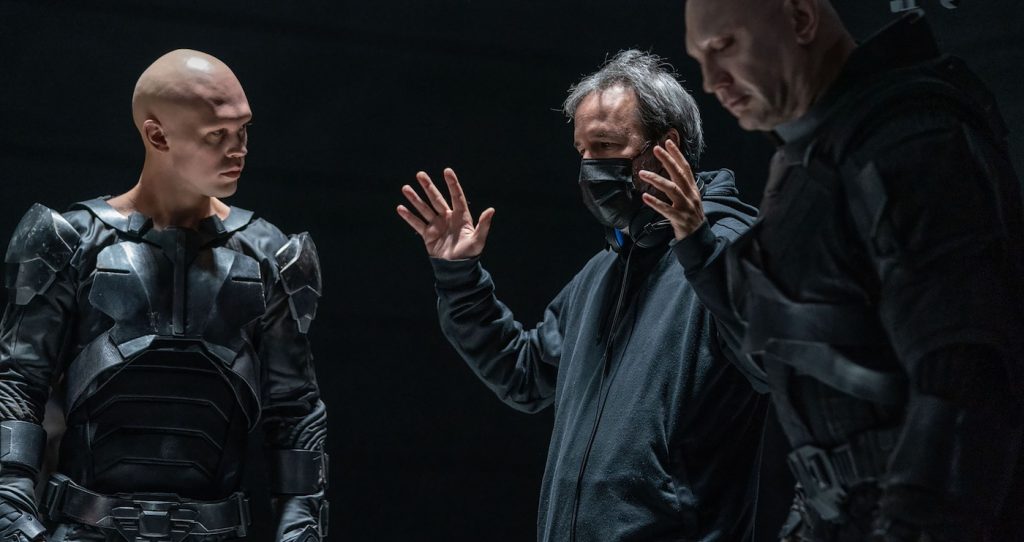
We get much more time with the Fremens living in the Sietch. What do their costumes tell us about this tribe?
They wear practical desert garb that nomadic peoples have worn from the beginning of their history. In Dune: Part Two, various nomadic cultures have merged into one desert culture for survival 11,000 years into the future. They’ve brought the best aspects of every desert culture, the Tuareg, the Bedouins, into this beautiful conglomeration that’s beautiful and romantic, a la Lawrence of Arabia.
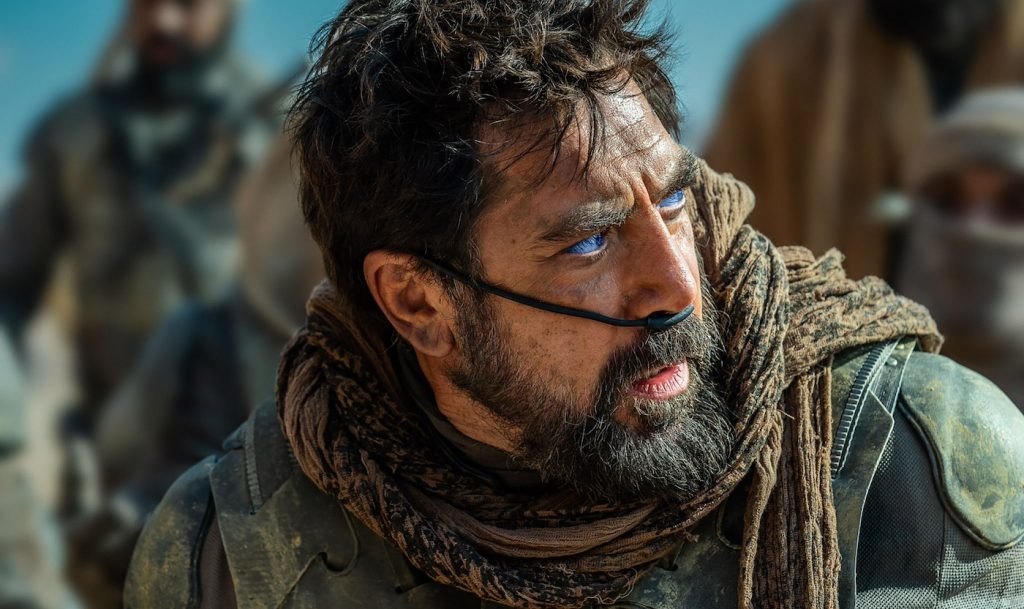
Lady Jessica goes through a lot in this film after arriving in Arrakis and fleeing to the Sietch. How do her costumes chart her transformation from where we left off in Part One?
When we left her in Dune: Part One, she was still in her stillsuit and dessert wrap. When she gets to the Sietch, she starts dressing like the Fremens—in a more humble style with the rougher linen, almost djellaba-esque long gowns, and wrapped veils, all printed by Matt.
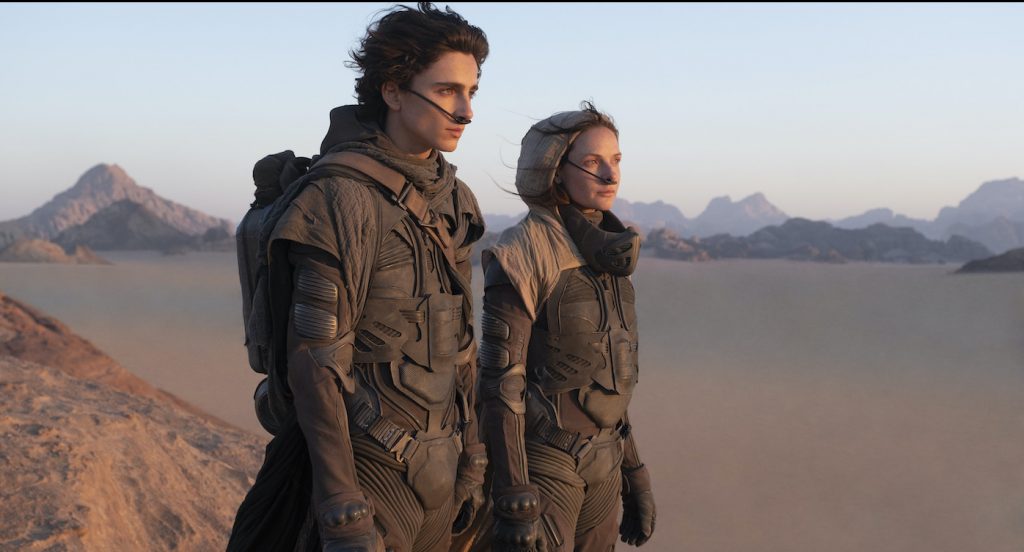
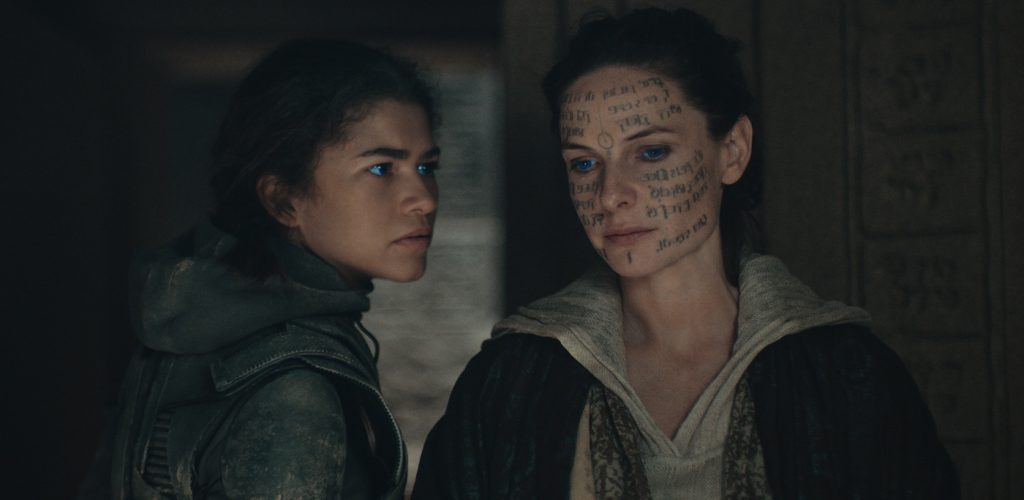
Once Lady Jessica becomes the Southern Reverend Mother, her face is tattooed over with the prophecy, and her outfits are elaborate but in earthy tones. What went into this collection?
Working with sketch artist Keith Christiansen, we started looking at the Egyptian sarcophagi since the Bene Gesserits are ancient nuns or heads of their particular sect. The sarcophagi are so elaborate, and their shapes are quite beautiful and age-old, with magnificent carving in the details. We used many layers of different fabrics—hand-painted velvets, hand-painted silks, and tapestry fabrics. We purchased all the fabrics, mainly from Italy and some from Thailand and Eastern Europe, and pieced them together into these incredible, ornate patchworks. We painted, dyed, and printed them all in-house.
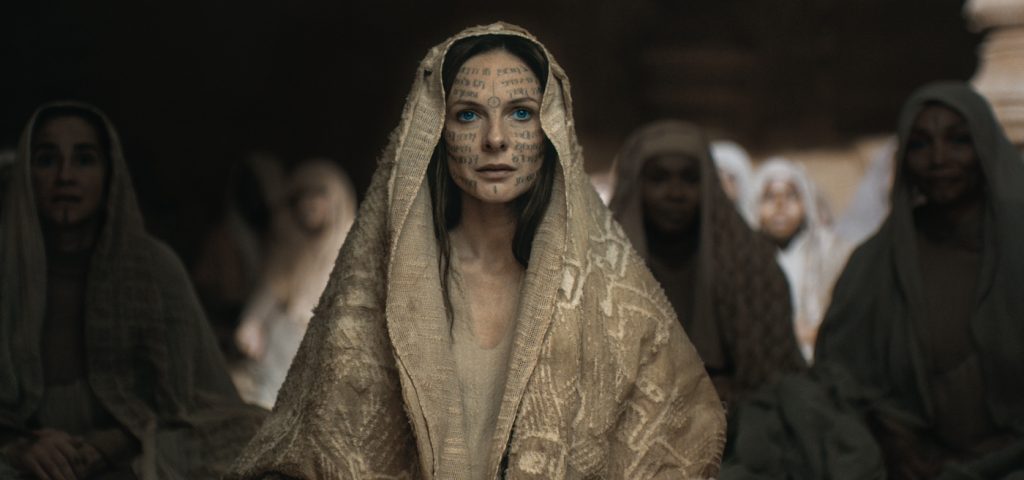
What about the elaborate headdresses on Lady Jessica and the other southern Reverend Mothers?
The jewelry came from all over the Middle East and North Africa. I had shoppers in bazaars in Istanbul, Morocco, and Egypt. Then, we disassembled them, and my jewelry maker put everything back in a new way to make it look futuristic. We pieced together different necklaces for each of the Reverend Mothers. We took all of that detail from the sarcophagi and made them come alive.
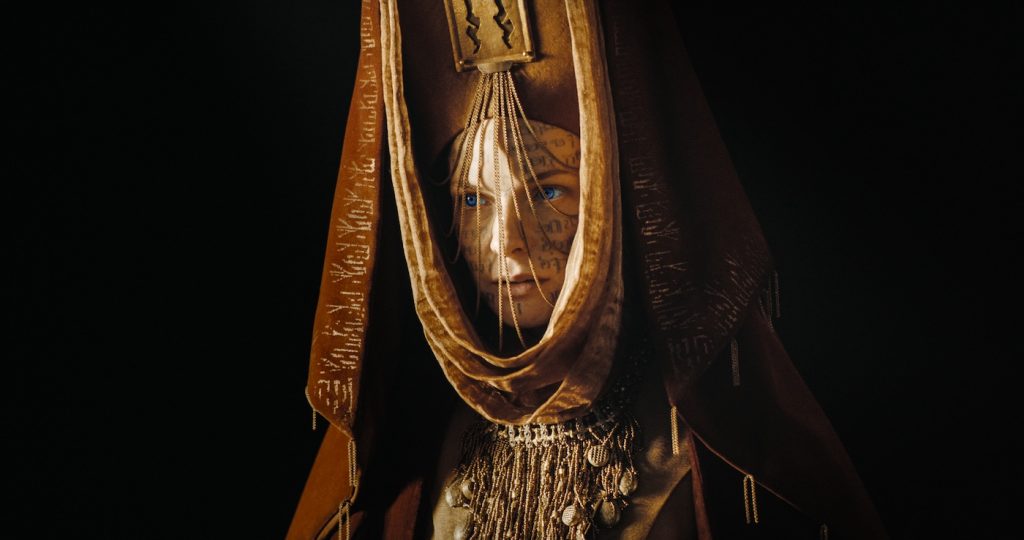
Lady Jessica and the southern Reverend Mothers dress differently from the ones we saw in Part One, i.e., Reverend Mother Mohiam’s entourage of Bene Gesserit sisters, who were all in black.
Mohiam comes from the Emperor’s world. You don’t wear black in the desert, or you’re going to bake. These women have navigated for many, many years through the different desert cultures within the Fremen world. I imagined Fremen sects in the south were different from those in Northern Arrakis. Even though they’re all Reverend Mothers, they are on a different planet. So, I wanted to distinguish them with color, but their shapes are very similar.
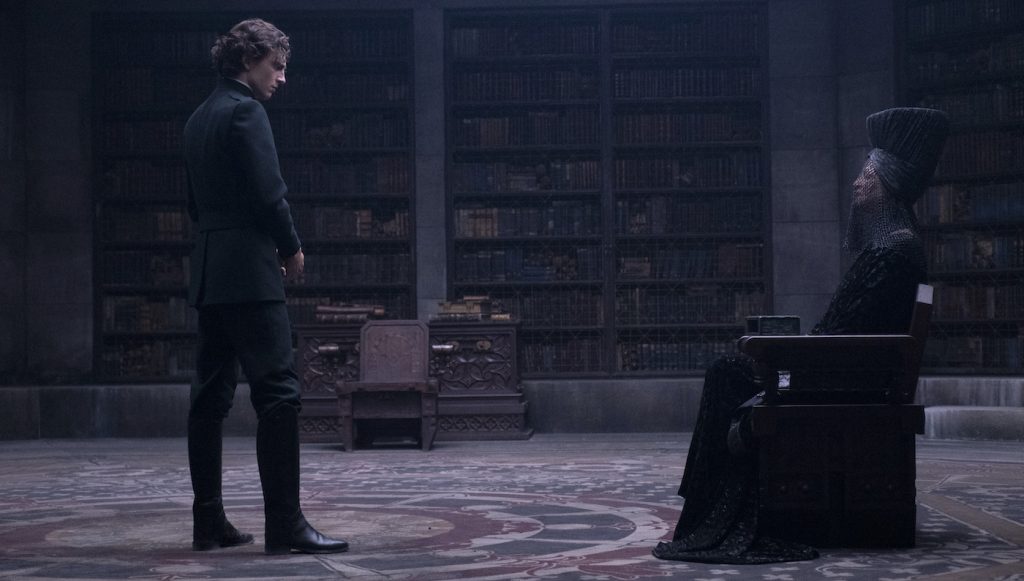
Yes, their silhouettes and head coverings have a similar look.
They’re all based on Medieval nuns and the women of the tarot cards, particularly with the Queen of Swords.
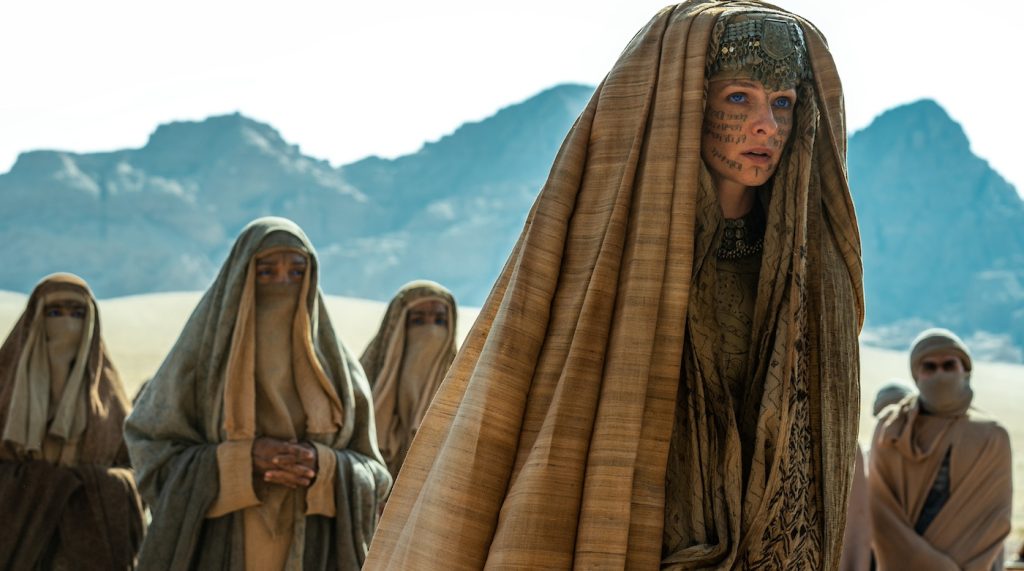
The Emperor (played by Christopher Walken) is dressed relatively simply as the Ruler of the Known Universe. What is the reasoning behind that?
There were two main references. One was a bronze statue of Kublai Khan—I was obsessed by the power and the simplicity of his wardrobe. And there was a Japanese Emperor from the movie Rikyu, I remember the simplicity of his dress and the power it gave him. Since we were shooting that portion in Italy with very simple architecture at the cemetery [on the grounds of the Brion tomb in San Vito d’Altivole, Italy], he’s not surrounded by anything ornate. It’s all elegant and almost ritualistic in style, so I thought his wardrobe had to be consistent with his surroundings.
Check back tomorrow for the conclusion of our conversation, where West discusses Paul Atreides’ worm-riding armor, how Catholic nuns inspired Princess Irulan’s headdresses, and why it is crucial to camera test every fabric when shooting in infrared.
Check out part two of interview with Jacqueline West here.
Dune: Part Two is in theaters now.
For more on Dune: Part Two, check out these interviews:
Architect of Arrakis: “Dune: Part Two” Editor Joe Walker on Forging a Ferocious Masterpiece
Featured image: Caption: REBECCA FERGUSON as Lady Jessica in Warner Bros. Pictures and Legendary Pictures’ action adventure “DUNE: PART TWO,” a Warner Bros. Pictures release. Photo Credit: Niko Tavernise


